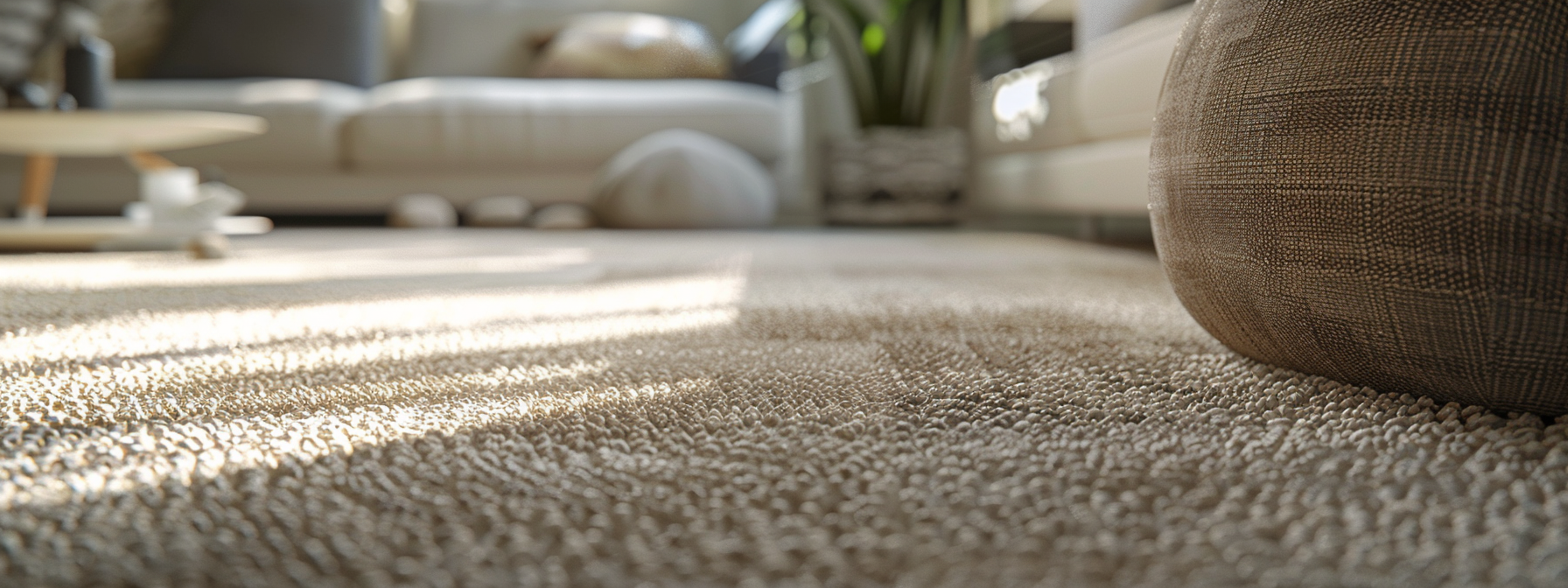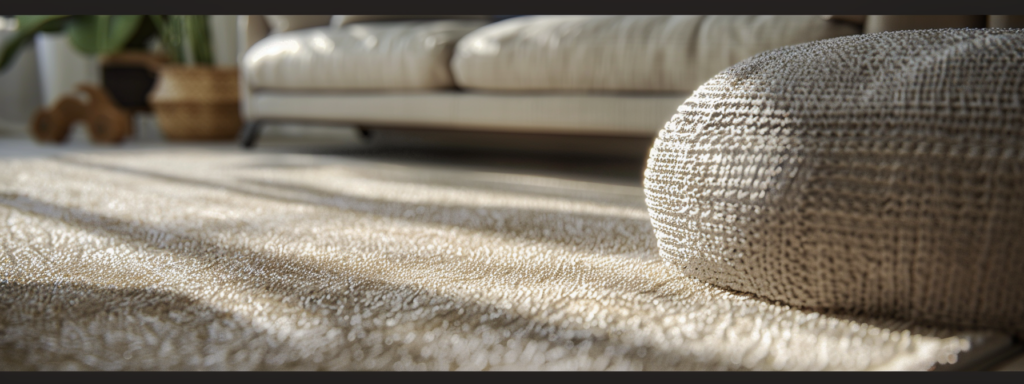Common Mistakes to Avoid When Patching a Carpet

Patching a carpet is a practical solution for addressing wear, damage, or stains that concentrate in a specific area, allowing for restoration without the need to replace the entire carpet.
This process not only saves considerable costs but also extends the life of your carpet by integrating a new piece that blends seamlessly with the existing material.
What is Carpet Patching?
Carpet patching is a repair method aimed at fixing specific areas of a carpet that have been stained, worn out, or damaged. The goal is to restore the carpet’s appearance and functionality without the need for complete replacement, making it a cost-effective and efficient solution for maintaining the carpet’s aesthetic appeal and longevity.
Tools and Materials Needed
The process requires some essential tools and materials, including:
- Utility Knife: For precise cutting of the carpet.
- Carpet Patch Adhesive: To secure the patch in place.
- Tape Measure: For accurate measurement of the damaged area and the patch.
- Carpet Seam Roller: To blend the patch seamlessly with the surrounding carpet.
- Heavy-Duty Tape: To mark and secure the area temporarily.
- Scissors: For trimming any excess or protruding fibers.
Additional materials like Gorilla Glue, Goo Gone (for removing excess glue), and donor carpet squares (if you don’t have spare carpet) might also be necessary depending on the specific situation and the type of patching being performed.
Patching a carpet requires precision and attention to detail, especially when it comes to matching the nap direction of the patch to that of the existing carpet. The process involves cutting out the damaged section, preparing the replacement patch to fit perfectly, and securing it in place with carpet tape or adhesive. Ensuring the nap direction aligns is imperative for the patch to blend in and be as unnoticeable as possible.
By carefully selecting a matching carpet patch and meticulously following the patching steps, homeowners can effectively repair their carpets, restoring their appearance while avoiding the higher costs and inconvenience of a full replacement.

Common Mistakes in Carpet Patching
When patching a carpet, several common mistakes can compromise the quality and longevity of the repair. Understanding these errors and how to avoid them is important for achieving a seamless and durable carpet repair.
Preparation Mistakes
Failure to Sequence Rolls Before Making Any Cuts
Sequencing the carpet rolls before making any cuts is essential to avoid issues such as bowing, skewing, dye lot variations, and pattern match problems. Not paying attention to the sequence can result in a patch that looks out of place, affecting the overall appearance and integrity of the carpet installation.
Inadequate Dry Lay
Laying out the carpet in the intended area before applying glue is important to ensure a proper pattern match and adjust for any deviations. Skipping this step can lead to misaligned patterns or ill-fitting patches, which are difficult to correct once the adhesive has been applied.
Application Errors
Improper Application of Seam Sealer
The seam sealer is important in preventing edge ravel, but it must be applied correctly. An inadequate application can leave the edges of the patch vulnerable to fraying and separation, compromising the repair’s durability.
Lack of Proper Tools
Having the right tools on hand, such as the correct trowel notch size and a power stretcher, is essential for a successful installation. The absence of these tools can lead to inadequate adhesive spread rates or inability to properly stretch the carpet, resulting in a less secure and potentially uneven installation.
Patching Techniques
Seam Peaking
Seam peaking occurs when the carpet is stretched across or perpendicular to the seam, creating a raised line that is both visually unappealing and a tripping hazard. To avoid this, the carpet should be stretched parallel to the seam, ensuring a flat and smooth appearance.
Seam Shadows
Improper placement of seams can result in shadows, making seams more visible under certain lighting conditions. To minimize this effect, avoid placing seams in direct light paths and instead run them parallel to the main light source of the room.
Seam Splitting
Seam splitting can occur when seams are placed in high-traffic areas or where there is potential stress on the carpet. Keeping seams away from these areas can help prevent splitting and ensure the longevity of the patch repair.
By avoiding these common mistakes, you can achieve a carpet patch that is not only visually pleasing but also durable and well-integrated with the existing carpet.

Advanced Patching Tips
Handling Patterned Carpets
When it comes to patching patterned carpets, precision is paramount. The success of the task lies in how well the patch integrates with the existing pattern, making the repair virtually undetectable.
Here are some advanced tips to ensure a seamless match:
- Pattern Alignment: Ensure the pattern on the patch perfectly aligns with the surrounding carpet. This might require careful measurement and cutting to match the pattern’s flow.
- Tone Matching: For carpets with tone-on-tone patterns, selecting a patch that closely matches the original carpet’s tone can help disguise the repair. Such carpets use variations in tone to create subtle patterns, which can be easier to match than more complex designs.
- Seamlessness: Achieving a seamless look may involve selecting a piece of the carpet from a less visible area of the room, such as a closet or under furniture, to ensure the best possible match in wear, color, and pattern.
Cost Considerations
The intricacies of patching a patterned carpet often lead to higher costs, primarily due to the increased labor and skill required. Here’s what to expect:
- Professional Services: Given the complexity, hiring a professional might be necessary to ensure a patch that’s correctly aligned and integrated. This service will factor into the overall cost.
- Custom Patches: In some cases, a custom patch may need to be created to match the existing carpet, further increasing the expense.
Patching a carpet, particularly one with patterns, is a nuanced task that blends art with precision. It requires a keen eye for detail, a steady hand for execution, and patience to ensure the patterns align seamlessly. While the task can be more complex and costly than patching a solid color carpet, the ability to preserve the aesthetic and functional value of a unique carpet design makes it a worthwhile endeavor.

Frequently Asked Questions
How does failing to sequence rolls impact carpet patching?
Not sequencing rolls before making cuts can lead to issues such as bowing, skewing, dye lot variations, and pattern match problems. This mistake can significantly affect the visual continuity and aesthetic appeal of the carpet installation.
What are the consequences of inadequate dry lay in carpet patching?
Inadequate dry laying can result in improper pattern matching and adjustment issues, leading to visible seams or mismatched patterns that detract from the overall look of the carpet.
Why is the proper application of seam sealer important in carpet patching?
Improper application of seam sealer can cause edge ravel, where the carpet fibers start to unravel from the edges, compromising both the appearance and durability of the carpet patch.
How does the lack of proper tools affect the carpet patching process?
Not having the right tools, such as the correct trowel notch size for adhesive application or a power stretcher for tensioning the carpet, can lead to a poorly executed patch that may not properly align or adhere to the surrounding area.
What is seam peaking, and how can it be avoided?
Seam peaking occurs when the carpet is stretched across or perpendicular to a seam, causing it to rise or peak at the seam. It can be avoided by stretching the carpet parallel to the seam, thus maintaining a flat and uniform surface.
How do seam shadows form, and what is the best strategy to prevent them?
Seam shadows are formed when a carpet seam is placed in a location where light, either from a window or an artificial source, directly hits the seam, casting a shadow that makes the seam more visible. To prevent this, avoid placing seams in direct light paths and instead align them parallel to the main light source.
What leads to seam splitting, and how can it be mitigated?
Seam splitting occurs when the carpet seam is subjected to stress or heavy traffic, leading to the separation of the carpet along the seam. Keeping seams away from high-traffic areas and potential stress points can mitigate this issue.
Why is patching patterned carpets more complex?
Patching patterned carpets involves additional considerations such as alignment and pattern matching, which require precise cutting and placement to ensure the patch blends seamlessly with the existing carpet, making it a more complex process.
How do cost considerations affect decisions in patching patterned carpets?
Patching patterned carpets can be more expensive and time-consuming due to the need for precise matching and the potential involvement of professionals, which might necessitate budget and timeline adjustments.
What makes tone-on-tone patterned carpets a popular choice for patching?
Tone-on-tone patterned carpets, which utilize variations in tone rather than contrasting colors to create patterns, offer greater decorating flexibility and can be easier to match for patching purposes, making them a popular choice.
How can one ensure a seamless integration of a carpet patch in a patterned carpet?
Ensuring seamless integration in a patterned carpet requires careful selection of the patch to match the existing pattern, precise cutting to align patterns, and consideration of the carpet’s wear and color to blend the patch effectively.
What are the key factors to consider when selecting a carpet patch for a high-traffic area?
When selecting a carpet patch for a high-traffic area, considerations should include the durability of the patch material, the compatibility of the patch’s texture and color with the surrounding carpet, and the method of installation to ensure the patch can withstand the wear and tear of the area.
Whether you decide to take on this challenge yourself or enlist the help of a professional, the key lies in preparation, careful execution, and understanding the intricacies involved in working with patterned materials.
Author
-

As the Co-Owner of Masterful, Randy has been providing quality cleaning services to the Salem and Portland areas of Oregon for many years. He has built a reputation for excellence in the industry. His team take prides in using the latest cleaning techniques and technologies to deliver exceptional results every time.
View all posts






